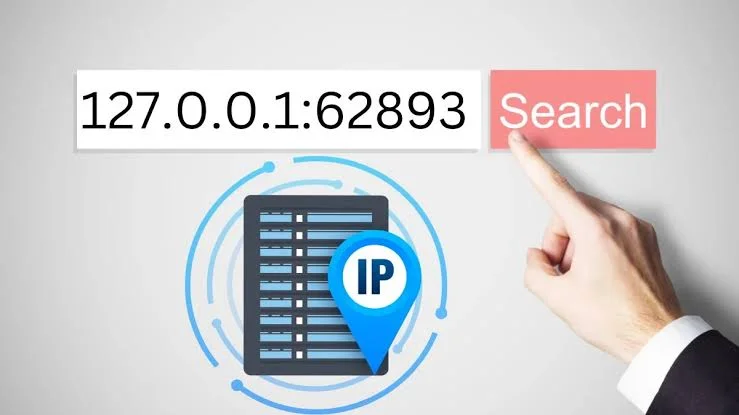
127.0.0.1:62893
Have you ever stumbled upon “127.0.0.1:62893” and wondered, “What in the world does that even mean?” Whether you’re new to networking or just curious about how computers communicate, this mysterious string of numbers and symbols can be both confusing and intriguing. Let’s unravel the meaning behind it and dive into how it works in the world of computer networks.
Breaking Down the Numbers: What Is 127.0.0.1?
To start understanding “127.0.0.1:62893,” we need to look at the first part: 127.0.0.1. This sequence represents something known as the loopback address in Internet Protocol (IP) networking. In simpler terms, it’s like an address pointing right back at your computer.
Whenever a computer sends data to 127.0.0.1, it’s sending it to itself. This address is reserved specifically for the loopback function, allowing computers to test network connections without ever leaving the system. It’s a neat trick that programmers and IT professionals use frequently to check whether their network software is functioning correctly without involving external devices or servers.

The Role of the Port: What Does 62893 Mean?
Now, let’s focus on the second part: 62893. This is a port number. Ports are like doors on a computer, each assigned to different services or applications. When data is transferred, it doesn’t just go to your computer’s IP address; it has to go to a specific port. Think of it 127.0.0.1:62893 like delivering mail to an apartment building: the IP address is the building, but the port is the specific apartment where the package is dropped off.
Port numbers range from 0 to 65535, and they are often used for various tasks like running web servers, handling emails, or communicating with databases. The port number 62893 could be dynamically assigned for temporary communication between applications or systems. In most cases, it’s a high-numbered ephemeral port that is used for short-lived connections, particularly by web browsers or other internet-based software.
Why Use the Loopback Address?
You might be wondering, “Why do we even need an address like 127.0.0.1?” The answer is simple: testing and debugging. Developers often use this address to check whether an application is working as intended on their machine before deploying it on a live network. Since it allows you to interact with your system without leaving your local environment, it’s perfect for diagnosing problems in web servers, databases, or even chat systems.
For example, if you’re developing a website on your computer, you might set it up to run on 127.0.0.1. This allows you to access the site as if it were hosted online, even though it’s just running locally. It’s an efficient and safe way to develop without worrying about exposing your site to the wider internet while you’re still working out the kinks.
What Happens When You Visit 127.0.0.1:62893?
Let’s say you’re browsing the web, and suddenly, your browser directs you to 127.0.0.1:62893. What’s happening?
Essentially, your browser is trying to connect to a service running on your computer through port 62893. This could happen if you’re running a local web server, an application that opens specific ports for communication, or if you’re using a tool that connects to a local service. The key takeaway here is that 127.0.0.1 always refers to your machine.
This address might show up in situations where you’re testing web applications locally or working with software like virtual machines, Docker containers, or even database systems. It’s a critical tool for developers, system administrators, and anyone working with complex systems that need to communicate over networks.
Common Uses of 127.0.0.1 and High Ports Like 62893
In most cases, you’ll encounter 127.0.0.1 when you’re dealing with localhost. “Localhost” is a more human-friendly term for the loopback address. Whether you’re setting up a web server, or database, or running some kind of local application, localhost is often a default setting. High port numbers like 62893 are commonly used in these setups because they don’t interfere with well-known lower ports reserved for services like HTTP (port 80) or HTTPS (port 443).
For example, let’s say you’re running a local version of a database management system, like MySQL. You might configure it to use 127.0.0.1, and it will connect through a specific high-numbered port to make sure only your local machine can access the database. This ensures your database isn’t exposed to external networks, which is critical for security during development or testing.
Security Implications of 127.0.0.1:62893
While working with local hosts is generally safe, it’s important to understand the security implications of opening ports, especially when connecting services to high-numbered ports like 62893. In most cases, when you’re running something locally on 127.0.0.1, it’s isolated to your computer, so no one from the outside world can connect to it. However, if you misconfigure your network or expose your machine to external connections, you could unintentionally open a backdoor for hackers to exploit.
That’s why it’s crucial to ensure that any services running on localhost are properly secured and are not unintentionally exposed to the wider internet. You’ll also want to avoid opening unnecessary ports, as they could create vulnerabilities in your system.
Troubleshooting Issues with 127.0.0.1:62893
Occasionally, you might encounter issues when trying to access 127.0.0.1:62893. Maybe your browser can’t connect, or an application seems to be malfunctioning. The first thing to check is whether the service you’re trying to connect to is running on your machine. Since this address refers to your system, a connection failure typically means that the application isn’t active, or it’s been misconfigured.
One simple way to troubleshoot is to open a command-line interface and ping 127.0.0.1. This sends small packets of data to the loopback address to ensure it’s working correctly. If the ping command fails, there’s likely something wrong with your local network setup or the application you’re trying to reach.
The Power of Localhost for Developers
If you’re a developer, you’re likely familiar with 127.0.0.1, as it plays a pivotal role in software testing and development. Whether you’re building websites, coding applications, or running databases, the ability to run these services locally provides a safe and efficient environment to experiment and troubleshoot without the risks of live deployment.
By using ports like 62893, developers can create multiple instances of services or applications without causing conflicts with other services running on the same machine. It’s a brilliant system for keeping things organized and isolated, allowing for seamless development.
Conclusion: Embrace the Mystery of 127.0.0.1:62893
In the world of networking, addresses like 127.0.0.1:62893 might seem cryptic, but they’re essential tools for development, testing, and system management. Whether you’re debugging an application, running a local web server, or simply learning more about how networks operate, 127.0.0.1:62893 understanding how loopback addresses and ports work will give you valuable insight into the inner workings of your computer.
So next time you come across 127.0.0.1:62893, don’t be puzzled. Embrace it as an opportunity to explore how computers communicate with themselves—and perhaps, gain a deeper appreciation for the often-overlooked magic of networking!







